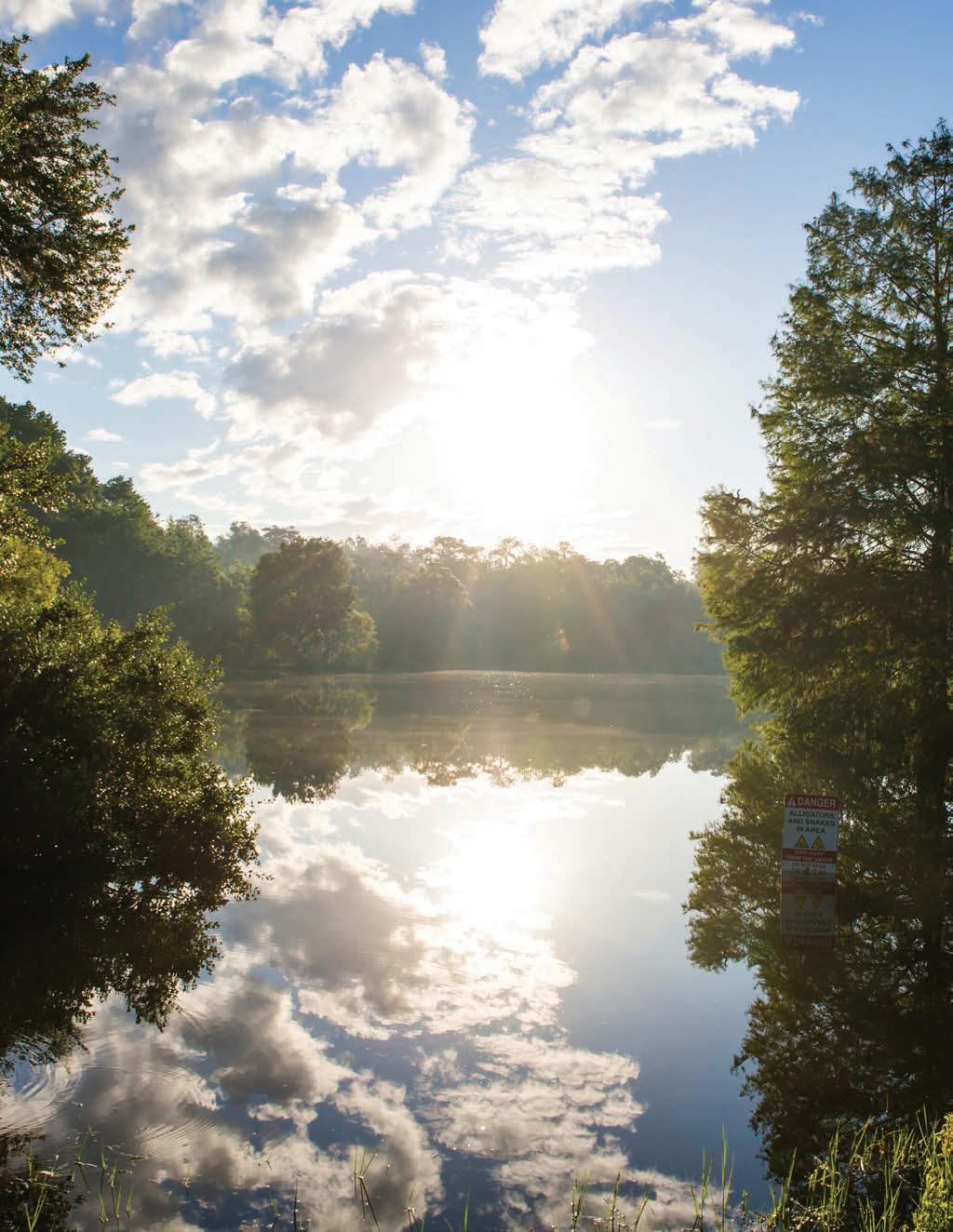




The city of Gainesville is the county seat of Alachua County, Florida, with a population of 141,085 in 2020. The greater Gainesville area offers 100+ miles of biking and hiking trails and eight local Florida State Parks. Gainesville is also home to the University of Florida, the fourth-largest public university campus by enrollment in the United States as of the 2021-22 academic year.
There is archaeological evidence that the area around Gainesville has been inhabited since 12,000 years ago, although it is not known if the Paleo Indians of the Gainesville area established any permanent settlements.


Archaeologists unearthed a Deptford culture campsite in Gainesville, which was estimated to date from between 500 BC and 100 AD. The Deptford people who moved into Paynes Prairie and Orange Lake during the first century evolved into the Cades Pond culture, but were displaced by migrants from southern Georgia sometime in the seventh century. These migrants evolved into the Alachua culture and they built their burial mound on top of the Deptford culture campsite.
When Europeans came to the area, they made contact with the Potano people, who were descendants of the Alachua culture. Eventually, Spanish colonists began cattle ranching in the Paynes Prairie area in the 18th century until the Spanish ceded Florida to the United States in 1821. Gainesville was established in 1854 and named after Edmund P. Gaines, one of the U.S. Army’s senior commanders during its formative years in the early 1800s. Gaines was a veteran of the War of 1812, Seminole Wars, Black Hawk War and Mexican–American War.
The town of Gainesville was incorporated in 1869 and chartered as a city in 1907.

A college town with huge swaths of protected natural beauty, many call Gainesville a place “where nature and culture meet.”
The East Florida Seminary in Ocala is one of the first schools to use this funding, but it was closed in 1861 at the outbreak of the Civil War. In 1866, EFS reopened in Gainesville, beginning a 150-year journey to become one of the largest, most prestigious schools in the world.
In 1905, the Florida Legislature passed the Buckman Act, completely reorganizing the state’s publicly supported institutions of higher education. The city of Gainesville lobbied for the new University of Florida by offering land, money and an agreement to “furnish water to the university without charge.” The Gainesville campus opened for registration on Sept. 24, 1906, and classes


began two days later with 102 students enrolled.
Because of its mild climate, Florida was used to train troops for battle during the second World War. By the end of the war, Florida developed an excellent transportation system and attracted many high-tech industries to the state, including the new Space Program.
As a result, Florida experienced a population boom after World War II, which carried over into its universities. The University of Florida grew from a school of 5,000 white males with only a small number of classes available to women to a diverse student body of more than 28,000 men and women by 1974.
In 1985, the University of Florida was added to the Association of American Universities, a prestigious organization of the top 63 public and private higher education institutions in North America. UF’s placement serves as recognition for an outstanding research university with world-renowned programs in medicine, agriculture, engineering, business and law.
By 2000, the campus grew to more than 900 buildings with 17 colleges and more than 100 research labs, service centers, education centers, bureaus and institutes. It also expanded its offerings to 100 undergraduate degree programs, more than 200 graduate programs and 30 combined-degree programs.

In 1853, Florida Gov. Thomas Brown signed a bill that provided public support to higher education.THE CAMPUS OPENED IN 1906 AND CLASSES BEGAN WITH 102 STUDENTS ENROLLED. Buckman Hall University of Florida Campus, 1916
Since 1990, the population of Gainesville has increased 52.3% to an estimated 141,000 according to the last census.
In 2020, 57.5% of the population was white, 20.6% Black, 13.8% Hispanic/Latino, 7.8% Asian, 0.3% American Indian and Alaska Native, 3.7% some other race, and 10.0% reporting two or more races. The average household income in Gainesville was $55,795 with a median age of 26.3 years. The city’s economic engine is the University of Florida, which is by far the largest employer in the area and brings in a large amount of state and federal money.

According to Gainesville’s 2017 Comprehensive Annual Financial Report, the top employers in the city are:

CITY’S ECONOMIC ENGINE IS THE UNIVERSITY OF FLORIDA,Downtown Gainesville
For the 2022-23 school year, there were 49 public schools serving 22,687 students in Gainesville and 23 private schools serving 4,330 private students. Gainesville has one of the highest concentrations of top-ranked public schools in Florida, including the P.K. Yonge Developmental Research School, which was ranked among the U.S. News & World Report’s Best High Schools in 2021.
Gainesville’s religious community centers include the Hoda Academy for Quranic Stuides, the Islamic Community Center of Gainesville, the UF Hillel, the Lubavitch-Chabad Jewish Student Center, the Tibetan Meditation Center, Gainesville Shambhala, and more than 10 Christian denominations. Epworth Hall, part of the original East Florida Seminar, was built in 1866. This historic building is no longer owned by the university but is part of the First United Methodist Church on Northeast First Street in Gainesville.
In the 2020-21 school year, the University of Florida was home to 53,372 students. This included 39,338 undergraduate students and 18,441 graduate students. The total workforce of the university was 29,876 in the fall of 2020. This included 5,371 full-time faculty, 4,230 graduate assistants and 710 postdoctoral associates.



IN 2020-21, THE UNIVERSITY OF FLORIDA WAS HOME TO 53,372 STUDENTS.UF’s Century Tower
For the second year in a row, the University of Florida is listed as one of the top five public research universities in the nation.
& WORLD REPORT
5
#5 Top Public Schools, 2022, 2023
COLLEGE FACTUAL
7
#7 Best Schools for Veterans Nationwide, 2022
FORBES
1
#1 Best Online Colleges, 2022
5
#5 America’s Best Employers by State (Education Industry), 2022
6
#6 America’s Best Employers (Among Public AAU), 2020
1
#1 Innovation Impact Productivity, 2020
4
#4 Teaching Impact, 2020
6
#6 Innovation Impact, 2020
NICHE BEST COLLEGES
1
#1 Best College Athletics in America, 2021, 2023
PRINCETON REVIEW
8
#8 Best Alumni Network, 2021, 2022
HEARTLAND FORWARD
1
#1 Top Universities - Technology Transfer & Commercialization, 2022

MILKEN INSTITUTE
3
#3 Best Universities for Technology Transfer, 2017
ROUND UNIVERSITY RANKINGS (RUR) THOMSON-REUTERS WORLD RANKING
37
#37 Medical Sciences, 2020, 2021
107
#107 World University Ranking, 2021
THE GREATER GAINESVILLE AREA HAS MORE THAN 100 MILES OF TRAILS AND CRYSTAL-BLUE FRESHWATER SPRINGS.
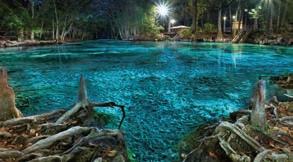
01 Bike, hike or walk the 16-mile Gainesville-Hawthorne Trail or visit Paynes Prairie, Florida’s first state preserve and check out the views from its 50-foot-high observation tower.
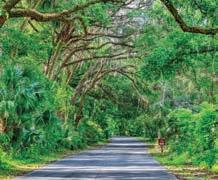
02 Visit Depot Park – the most popular downtown park in Gainesville, featuring a playground, splash pad, open fields, entertainment and free events throughout the year.

03 Check out UF’s Florida Museum of Natural History, Curtis M. Phillips Center for the Performing Arts and Harn Museum of Art. The Harn has the largest
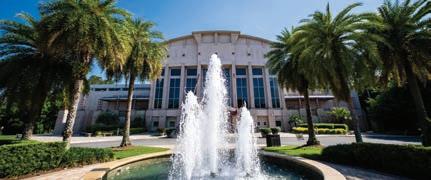
collection of Florida-themed art in the world!
04 Gather outside the world’s largest occupied bat houses across from Lake Alice on the UF campus. The bats normally emerge 15 to 20 minutes after sunset.
05 Float down the Santa Fe River in High Springs, fish on Lake Santa Fe and Lake Lochloosa, or visit Ginnie Springs, Ichetucknee Springs and Gilchrist Blue Springs State Park.
06 Visit antique shops, cafes and art galleries in Micanopy, Florida’s oldest inland town.

07 Go see the Morningside Nature Park and its Living History Farm with 278 acres featuring a spectacular wildflower display and wildlife like deer, wild turkey and rare gopher tortoises.
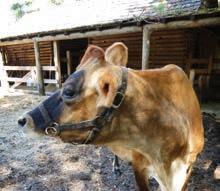

08 Cheer on the Florida Gators at Ben Hill Griffin stadium aka “The Swamp.” The largest stadium in the state of Florida, it is open to the public on most days. Run the stadium steps or lounge, read and daydream in the bleachers!

For more information on local attractions and events, go to www.visitgainesville.com

